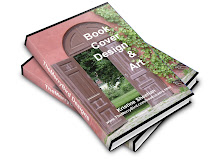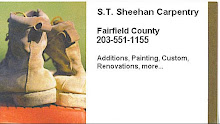So little time and so much to soak in! Ok design sponges - here are 3 Theories all Designers depend on. Most of these tips should be in your design background already but it never hurts to revisit them to awaken your inner designer again and again:
1: A Brief on Color Theory
Every designer has at some point in time seen a color wheel. It is basically the history of color making in one place.

It starts with the Primary Colors: Blue, Red and Yellow. Strong and versatile each color when mixed with one of the others creates a Secondary Color. i.e.- Blue + Red make purple, Red + Yellow make orange, and Blue + Yellow make green. My child loves to mix colors – it’s amazing to him. If I stop to think about it, color creation by mixing is Amazing!
The next step in mixing colors brings in a series of color hues that depending on saturation can be a darker or lighter version of the original color.
Ok – You get the idea.
Now there are Complimentary colors. These are the Colors that sit opposite from one another on the color wheel. When these colors when placed together tend to “vibrate”
i.e. Red and Green, Purple and Yellow etc.
Analogous colors are three colors next to each other on the wheel. i.e. Blue Violet, Violet, Violet Red.
2: Basics of Design
Learning how line, color, shape, texture, scale and space work together is where design basics begin. Ask yourself some questions and you will see the psychology on a design page.
Line is an important piece of design. It sets a tone to the image or design page. Are the lines straight and organized? Wavey and smooth? Jagged and pointy? Line sets the stage for the feeling in the design.
Color is the mood descriptor. Are you feeling blue? Are you feeling Red Hot? Friendly yellow?
Like line, Shape also sets a stage for a feeling. Does the square design on the page exude safety? Does the circle create fluidity, natural curves? Triangular balance?
Texture in a design is a nice way to bring a tactile sensation to a design. Basket weaves, ropes, satin, wood. Textures that people understand can enhance the mood of the design.
Scale is another point in design that cannot be ignored. Size matters! Are you looking at a business card or a billboard?
Space, use it wisely and there are not limits!
3: Typography
Here is a “Quick” on a very extensive topic, Typography.
To begin, typography is everywhere! It is an arrangement of fonts designs that you see in the newspaper, a magazine, on a billboard or a logo.
Typefaces are fonts like Arial, Times Roman etc. Fonts are a specific size or style of the typeface, i.e. Arial Narrow, 14pts.
Two types of font styles are Serif and Sanserif fonts.
Serif fonts are those with curls or ornate décor on the end of the letter stem:

Image Ref: www.ilovetypography.com/2007/08/26/who-shot-the-serif-typography-terms/
SanSerif fonts are Basically a Serif Font without a serif! Which means there isn't any flare or decoration on the letter stem.
How to utilize typography is up to the designer. But Typography involves other important elements to consider too - spacing, kerning, sizing and arrangement. Check out the link below for futher info!
Check out
http://www.observin.com/ for more info. On typography.
Utilize theory to make your designs the best they can be. Theory is the basis of all design.
Kristine Sheehan
TheMerryBird.com
5/3/09
















